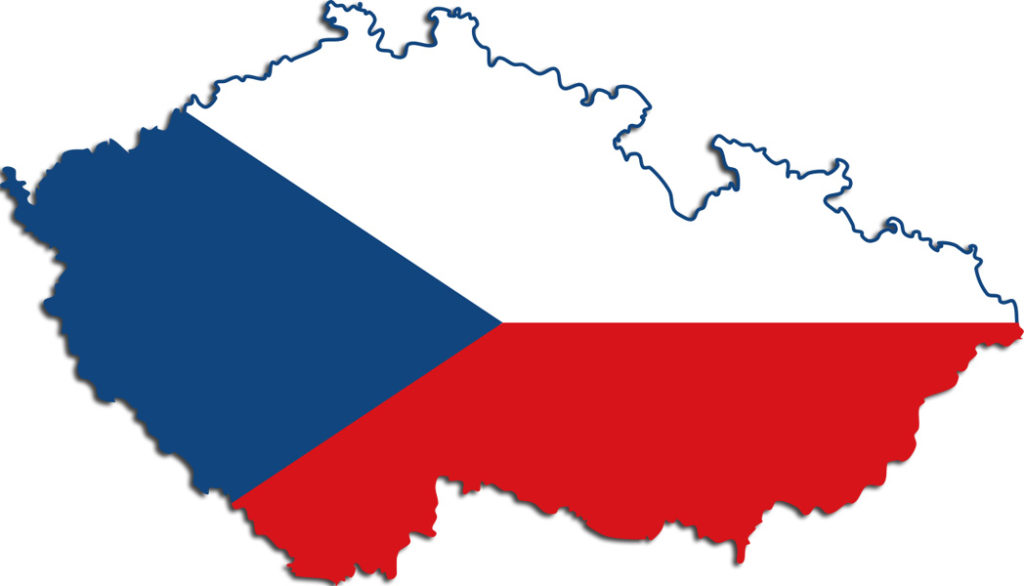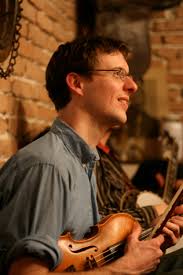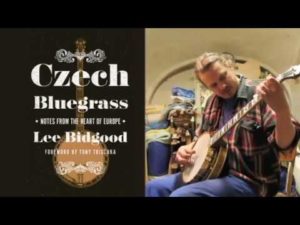Czech Bluegrass – Interview with Lee Bidgood
- Newsletter
-
Jan 13
- Share post

Interview with Lee Bidgood on Czech bluegrass
Bluegrass music’s transition to Europe came in different ways. Returning merchant sailors to the seaports of the industrialised nations bringing in records; and American Forces Network radio spilling into the countryside of parts of mainland Europe, being two ways in which bluegrass music became part of the lives of Europeans.
In the case of Czechoslovakia (or should I say the Czech Republic), the output from American Forces Network radio piqued the interests of people in the tramping (a scouting) movement; this being consolidated by Pete Seeger’s Prague concert in 1964. Thereafter Czech involvement in the music exploded with instrument makers, like Jaroslav Průcha (the maker of internationally proclaimed banjos); Jiři Lebeda (maker of resophonic guitars, and mandolins); Ondra Holoubek (another manufacturer of resophonic guitars); and musicians, including banjo / guitar player Marko Čermak; singer/song-writer Robert Křesťan; and Jiří Plocek among them, proliferating. Bands such as Zelenáči, Taxmeni and, later, Poutníci and Druhá Tráva took the music forward from the emulative to progressive formats.
For many years Czech bluegrass music has been firmly embedded as a leading participant in the world-wide bluegrass music culture.
Its reputation is enhanced by the involvement therein of the likes of Tony Trischka, who has written the Foreword to a newly-published book, Czech Bluegrass: Notes from the Heart of Europe (Folklore Studies in Multicultural World), written by Lee Bidgood.
Based on his experiences in Prague and Rakovník, Bidgood offers a fascinating study of the Czech bluegrass phenomenon, merging intimate immersion in the music with on-the-ground fieldwork informed by his own life as a working musician.
Richard F Thompson (RFT) interviewed Bidgood (LB) ….
RFT In the first instance, what prompted you to visit the Czech countries?
LB I first visited the Czech Republic while undertaking a study abroad semester in 2000. I lived in the center of Prague and tried to soak in as much culture as I could. I had gotten wind of Czech bluegrass activity through hearing about Czech mandolins by makers such as Lebeda and Čapek, and made what contacts I could. I visited Rosta Čapek’s workshop and saw a mandola he was making for Peter Rowan, which was fun. Selfishly, I wish I had purchased instruments then myself, as the exchange rate was much more in favor of the American dollar then that it is now.
In my book I discuss some of my early encounters with Czech bluegrass bands, for example, Reliéf; I first saw this group at the Malostranská Beseda, a venerable venue on the west bank of the city, almost in the shadow of Prague’s thousand-year-old hilltop castle. I was amazed at their fluency with American bluegrass, their vocal mastery, and instrumental chops. And I was flabbergasted to hear how between each song, MC Jirka Holoubek carried on deft repartee in Czech. I met a few people during this period, and started to learn the Czech language in earnest. When I returned to Prague as a Fulbright grantee in 2002-2003, I got much deeper, beginning to interview instrument makers and players, and to attend concerts, workshops, and festivals–a process that continues to today.
RFT What were your early impressions of the country, the people and the music there?
LB I was a different person then, but the country was as well. I remember things being darker, stranger, and more intense. I was seeking out things that were different from those I was familiar with in my life in the US–I was attracted to the oldest architecture, medieval art, and to the countryside, the train system, etc. It was a romantic attraction.
My first reactions to experiencing a live Czech bluegrass band was a sort of giddy amusement – I just couldn’t process the cognitive dissonance between sound and place, and it all just seemed unreal and hilarious. I have come to see that there are deeper sorts of play involved–serious fun, as it were.
Musically, I could tell from hearing Reliéf that this group had done some serious listening and practice. They were technically skilled, and musically expressive in nuanced ways. They played idiomatically in a number of styles, and “got” bluegrass. It wasn’t a pale imitation, it was the real thing — or as real a version of bluegrass as I might encounter at a jam or regional band performance in my home state of North Carolina.
Or course, time has flowed by since 2000, and as I have gotten to know more people, to know more about the language, the politics, the social system, etc. I have a less idealized view of the Czech Republic and what goes on there. At the same time, life has changed a lot over there in the past 17 years. One example: the accession to the European Union led to concrete changes in how sidewalks and pedestrian crossings look, about the general neatness of Prague, and state of the tram system, etc. During the time that I have been paying attention to Czech bluegrass, I have seen the introduction of YouTube and other social media platforms. Vast changes have happened in the circulation of musical recordings and pedagogical media. It has been fascinating to watch these changes unfold here at home, and with my Czech colleagues.
RFT Did you visit regularly after that and was there a reason for you making further visits?
LB My life has changed a great deal in the years following my first visits. As I completed college, started graduate school, got married, landed an academic teaching job, and became a father, it has gotten harder and harder to travel over to visit with my Czech bluegrasser colleagues. When I was more footloose, I tried to get over there once every other year, and in sum have spent at least 36 months over there, in eight separate trips (two of which were year-long fieldwork stays). I am an ethnomusicologist and ethnographer whose methodological upbringing has led me to see fieldwork as a social as well as a scholarly engagement. I have completed a number of articles, a feature-length documentary film, a soundtrack album, and now a book about what these Czech bluegrass colleagues have shared with me. At the end of all this work, I feel the responsibility to reciprocate as much as I can to attempt to repay (even symbolically) the countless meals, beers, minutes, hours, car rides, language explanations, and general kindnesses that have made my work possible over the last decade and a half. Secondly, I realize that I have just scratched the surface, and that there is much more to be said about what Czechs are doing over there, and how their interact with the wider bluegrass world, and the world at large.
RFT In relation to the book, what were the factors that led you to think about writing the book and when did those ideas first coalesce?
LB I developed many of the framing ideas for the book while in graduate school at the University of Virginia, in the program called “Critical and Comparative Studies in Music,” a fantastic course of study that was a lot of fun, and which challenged me to explore a variety of approaches to listening to, reading, and thinking about music. Dr. Michelle Kisliuk and Dr. Richard Will were my main on-campus advisors, and helped me to build a foundation for conducting research and for processing what I learned. They both helped me take a focused, person-centered view on music-making, and to consider the texture of lived musical experience as it interacts with larger mediascapes and political forces.
RFT For how long have you worked on the book?
LB I have been working on some of the pieces of writing in the book for 15 years. There is a good bit of material adapted from my doctoral dissertation, and new material added in for more context, clarification, and contrast.
RFT On what particular topics within what embraces bluegrass music in Czechoslovakia does the book focus?
LB I start the book by addressing what I related above as my inability to process the cognitive dissonance of experiencing bluegrass in Czech contexts. I Introduce the idea of “in-betweenness” that is a touchstone for the whole book, and the allied ideas of recreation and play that are essential (as most of us know) to “Being bluegrass.” Chapter two is a survey of the historical backgrounds for what I call “Americanism,” Czech recreations of elements of U.S. culture — ranging from their voracious appetite for western novels and films in the early 1900 to the “Tramping” phenomenon, and the restoration of U.S. military jeeps. I argue that Americanism is a practice in “in-betweenness.” Czech bluegrass is a prime example: it is solidly “in-between” — both fully grounded as a Czech expression and yet not divorced from its Americanness. This in-between status only amplifies the meaning and power of bluegrass, as its localness and foreignness are both active at the same time–think about bluegrass in California or Manitoba, or wherever you are from. There is a delicate but important tension that we all feel with bluegrass, that it is both “us” and “not-us” at the same time. Living in that tension is one of the essentially exciting things about bluegrass!
The following three chapters are case studies that examine the following: Czech bands touring in Europe, the trade in Czech banjos; learning to play the fiddle; philosophical issues with performing gospel songs if you are not a believing Christian. Each of these cases includes interview material with Czech musicians, from beginners to top professional players, from the “First generation” of Czech bluegrassers to those who have taken up the music recently, from women and men.
RFT What would you like to add / share on this subject?
LB One of my favorite things to do when considering bluegrass is to overthink its inherent biological imagery. I was tickled to find out that there is (to some degree) a debate as to whether poa pratensis, the plant we know as Kentucky bluegrass, is a native American variety, or whether it is European in origin. I think about weeds, invasive species, and the ways biology shifts, changes, and moves. At home my wife and I struggle to keep the Japanese stiltgrass out of our garden, a plot containing some native vegetables and flowers, but also with a fair share of imported and exotic species. Why should we be surprised, then, that Czechs (or Japanese folks, for that matter) have taken up bluegrass? There is so much more to be said about all of these questions, in the Czech context, the American one, and elsewhere. I hope to continue working to understand how people think about these kinds of issues, and to create media that help continue and refine these conversations.
Czech Bluegrass: Notes from the Heart of Europe (Folklore Studies in Multicultural World)
Published by University of Illinois Press (October 2017)
ISBN-10: 0252083008
ISBN-13: 978-0252083006
192 pages
http://www.press.uillinois.edu/books/catalog/48dtf8rr9780252041457.html
For a further insight into the author and this book see this story.
https://bluegrasstoday.com/czech-bluegrass-notes-from-the-heart-of-europe/


